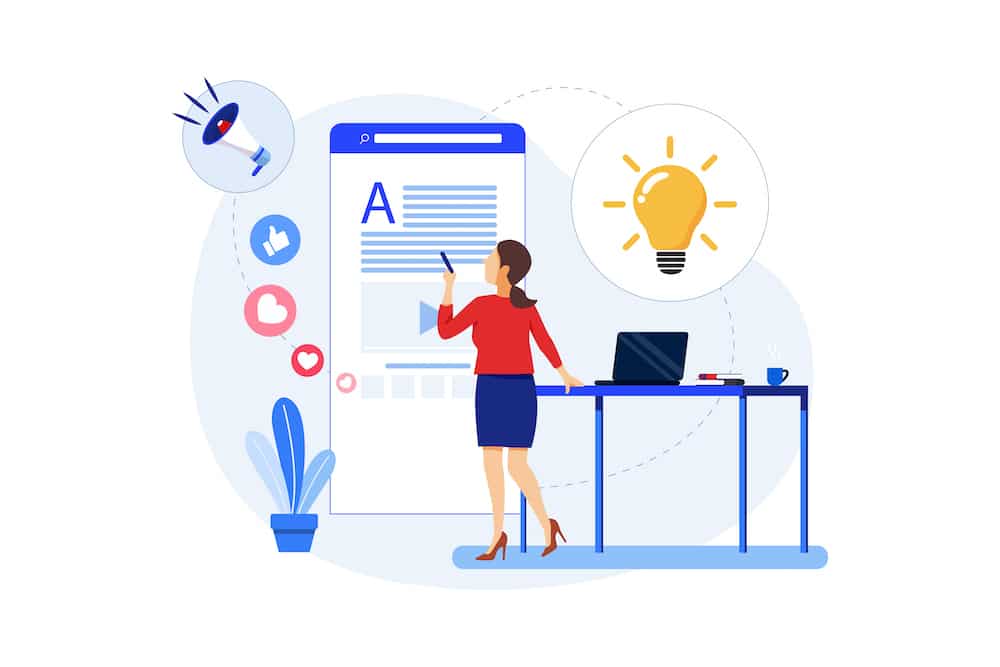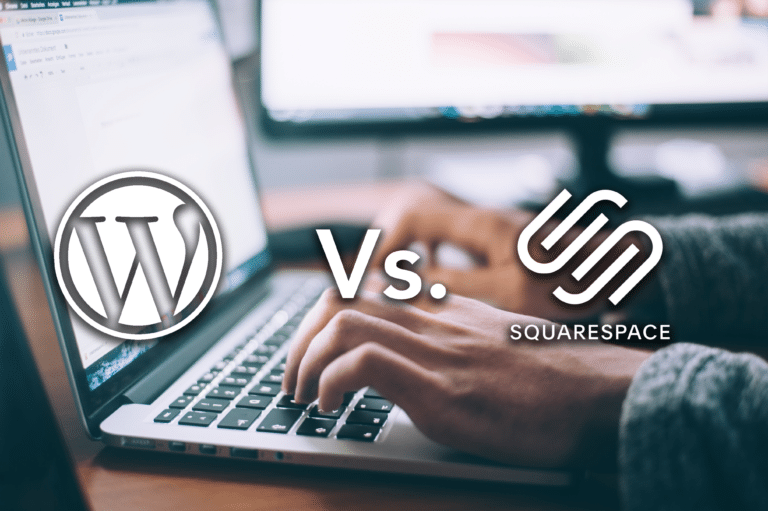Get An E-Commerce Site Audit
Have you ever wondered why you're not getting sales on your website? Do you want to dive a little bit deeper than this article? Get in touch with us for a free audit of your site today.
Whether you own a dropshipping store or sell products that you stock in a warehouse, e-commerce is an incredibly powerful tool. I remember the feeling I got when I sold my first e-commerce product on a website I made back in 2014. What an incredible feat! Listing a product online and getting a sale! The only issue was, that was my one and only sale for the month. How was I supposed to get more e-commerce sales? Well, through the years I’ve had the privilege of working on the websites of stores much larger than my original guitar equipment shop. I’ve learned a thing or two managing these Woocommerce stores, and you can take the advice for free!
Why Trust Me?
I’m Joe Holder, my company InnerWorks Digital specializes in optimizing the conversions of e-commerce stores. In context, I’ve worked directly on increasing the sales of e-commerce shops by hundreds of thousands of dollars. If these methods work for a larger store, then it can work for your smaller (or even larger) store! If you’re currently getting 1 sale a week, and you can raise it to 2 sales per week, that’s a 100% increase! While you won’t always be getting such massive percentage increases, one day you will see a much larger revenue increase, and ideally, you’ll see a much larger profit increase. Every day we are studying new methods to help our customers get more e-commerce sales.
Without further ado, let’s dive into some data and actionable solutions. Or, as Samuel L. Jackson would say in Jurassic Park 1, “Hold onto your butts.”
Method #1 Increase your Traffic Organically
Ok, this one might be obvious, but ask yourself: “where is my traffic coming from? “
If you are reading this, then it’s highly likely that you visited this site because of a simple google search. That is what we consider to be “organic traffic”. It’s traffic that you don’t have to pay for. If you are in the beginning phases of a project then you will have zero traffic. You can’t get any sales without traffic. In fact, when I sold my first product on my guitar equipment website in 2014, I honestly have no idea how the person even found my site. This was probably a really oddball google search where they happened to find the perfect item they were looking for. This is the exception and not the rule. You can’t rely on random events, it has to be predictable and repeatable for you to make sales.

If you sell gardening equipment and you have no site visitors, then you will probably sell zero rakes this month. That is ok, you have to start at zero, no matter what business you are building. With that being said, more traffic should bring more sales, so let’s increase that. Now, increasing the wrong type of traffic may not get you sales, but that is a topic for another time.
Increase Traffic: The Free Strategy to Get More E-Commerce Sales
Typically, a brand new e-commerce store does not have the luxury of an advertising budget. Because of this, a free to implement, SEO-centric strategy is highly advised for new WooCommerce stores. How many products do you have on your website? 4? 400? Just by uploading accurate imagery from your suppliers and putting your own twist on the product listing copy, you can drive quite a lot of traffic into your site. This is mainly because the sheer volume of content (400 pages) will bring people in to your website.
Don’t just copy and paste things from your supplier or from another seller’s listing. Go into detail, use the free plug-in: “Rank Math SEO” to optimize your product listing for SEO. Try to make sure all of your products have an SEO score of 70 or greater. Talk about why you like the product, make it a good listing. This is a great way to get more e-commerce sales.
Here’s a chart showing how much accurate product listings account for site traffic. Over 1k page views per day come directly from product listings. This is from one of our managed e-commerce sites that has over 500 products. That means on average, every listing is only getting about 2 views per day. That’s like nothing! But when all of the product listings combine together, it accounts for a huge amount of traffic daily. Believe me, it also accounts for a lot of this site’s sales.

What if I have less than 10 products??
If you have less than 10 products this method of simply correctly listing stuff won’t help you as much. You’re going to have to do a content marketing strategy. In translation: Write good content. If you have free time to watch an hour-long YouTube video (yes they exist), write good content instead. You can actually do just as well writing 50 or more blog posts about why your products are good! Compare them to each other, compare them to competitors, and just make things that people will find helpful. We created a very simple instructional guide for a product, and it has been responsible for at least $2500 worth of profit on the website in the past 6 months. That’s pretty good for a few hours spent writing the article! So, writing blogs is a good way to get more e-commerce sales even if you have a smaller site.
It’s as simple as that. Either write good content to sell your products, or optimize the products for SEO. Better yet.. do both!
Method #2: Paid Traffic
If you don’t want to invest 6-12 months into just writing content for your site, but have a great product, you may get away with a paid ad strategy. You should definitely start with Facebook ads as a strategy instead of Google ads. Facebook Ads is much more forgiving than Google Ads.

Facebook Ads: More Traffic
Facebook ads has always been known as the cheaper alternative to google ads for bringing quality traffic to your website. For example, with google ads, the lowest cost per click you will ever see is $1 per click. With Facebook Ads, you may see people coming to your website for less than $.10 per click! So due to the sheer volume of people, if your targeting is right, you can get some serious results! If you want to build a funnel on Facebook, you should definitely check out the highest rated course on udemy.com for it. I don’t currently know what the best course is, but I would highly recommend investing into learning the platform before throwing your dollars at it. Udemy is a great place to start.
Google Ads: People are already Looking for Your Products
If you have a moderate budget and a lot of products consider using Google shopping ads. It’s a lot like Facebook’s “dynamic product ads” but the ads show up when someone searches for the keywords that you choose. You can go ahead and try this out now. In a new tab, search for Adidas shoes. You will be met with a massive list of shoes that appear in the top area of Google’s search engine results page. This is a great bottom of funnel technique to get more e-commerce sales.
The most challenging part about using Google shopping ads is uploading your product feed. Google can’t just index your products automatically. You have to give them all of the correct information. If you are on Woocommerce there are a couple of good plugins for this, and if you’re on Shopify you can automatically serve the products with Google Ads.
Method 3: Convert your visitors into customers (More Frequently)
Your competition probably already employs a lot of methods to capture and keep their customers. However, if you’re like most eCommerce stores, you have a decent amount of traffic but few conversions. If your traffic is truly organic, then you have to ask yourself why they visit your store and don’t buy anything. Is it because of price? Is it because you aren’t actively engaging with your customers? Well, it’s probably a little bit of both.
Create an Email List
If you’ve got no email list and you’re selling products, you can probably double your sales just by creating a simple email list. There are countless email marketing tools out there. My favorite is by far Mailchimp. They have the greatest features and the most market share, so you know they aren’t going anywhere. Others that are worth trying are: Drip (eCommerce focused), Constant Contact, and ActiveCampaign.
Using email marketing to spice up your online strategy is the number 1 way to get more e-commerce sales. If you have a little bit of traffic and nothing else has helped, try email marketing.
Mailchimp has a free popup maker that you can use to create an opt in offer on your site. Offer some type of coupon or giveaway that you can sustain in the long run. With this opt in offer, don’t bankrupt your store, but also don’t be stingy. Think about the lifetime value of someone actually purchasing your products.
Once people are in your mailing list you can tailor offers to them. Have you ever had a product that you didn’t immediately buy, but later remembered to order it because of a followup email from the store? Do this for your customers. Don’t think of it as spamming them incessantly until they convert. Think of it as giving them more information over time so that they can make an informed decision about your product. Besides, would you really want people buying your products if they didn’t actually want them?
How Long Does it Take to See Results?
In conclusion, if you’re trying to get more e-commerce sales and you use all three of these methods it shouldn’t take long at all. The problem with most marketing techniques is that it takes effort. You have to actually sit down and do the work. Whether that involves manually doing the on page SEO for 100 products or if that involves writing blog content to help advertise for 10 products, you still have to put in the work to get more e-commerce sales.



